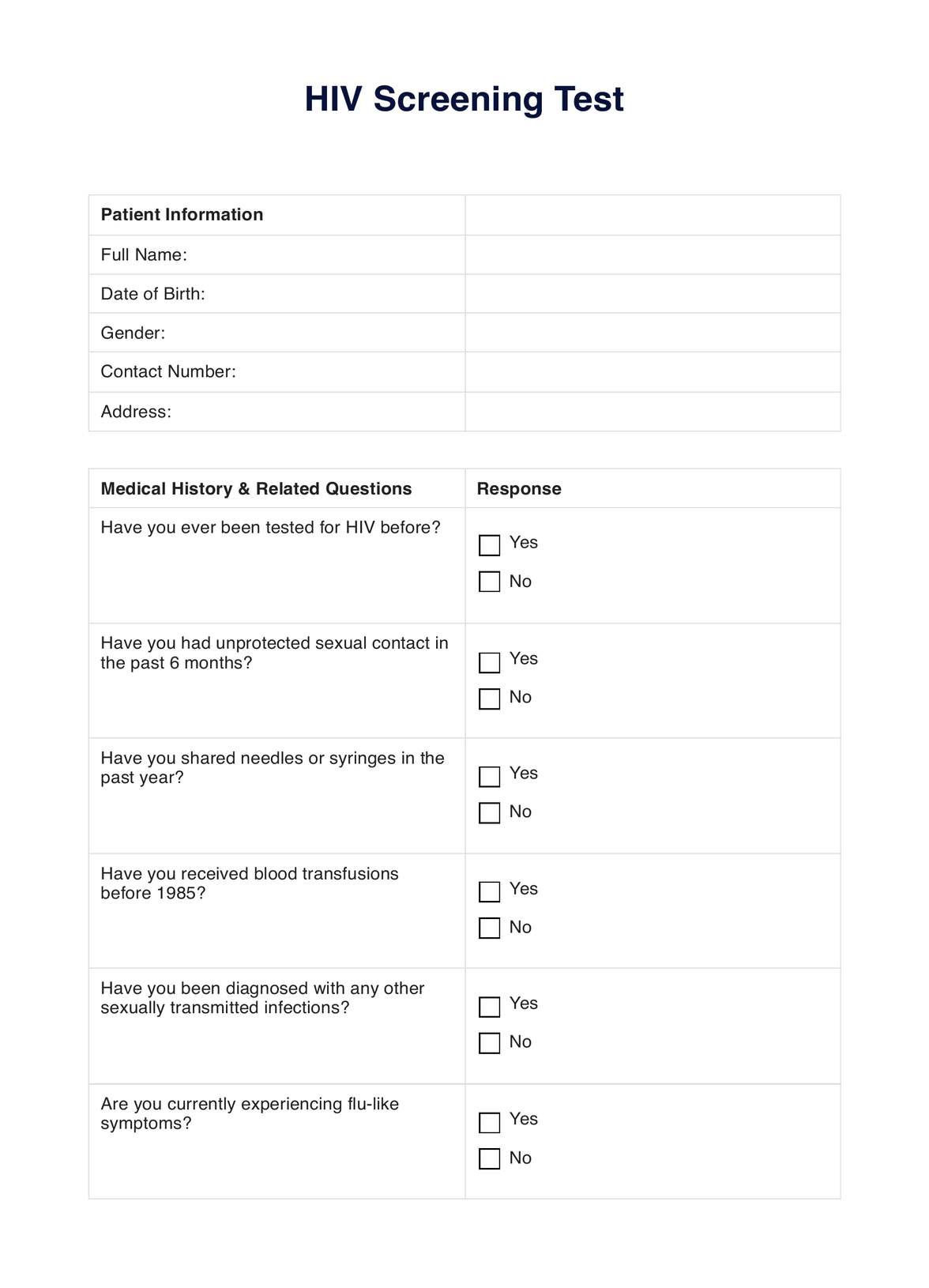Carepatron is designed with healthcare professionals in mind, ensuring a user-friendly interface, top-notch security, and features that streamline the entire screening process.

HIV Screening
Discover the comprehensive guide to HIV Screening with Carepatron. Streamline the process, ensure accuracy, and prioritize patient care. Download the free PDF now!
Use Template
HIV Screening Template
Commonly asked questions
Patient confidentiality is our top priority. Carepatron employs advanced encryption and security measures to keep all patient data confidential.
Absolutely! Carepatron is cloud-based, allowing healthcare professionals to access patient records and screening results from any device, anytime, anywhere.
EHR and practice management software
Get started for free
*No credit card required
Free
$0/usd
Unlimited clients
Telehealth
1GB of storage
Client portal text
Automated billing and online payments











